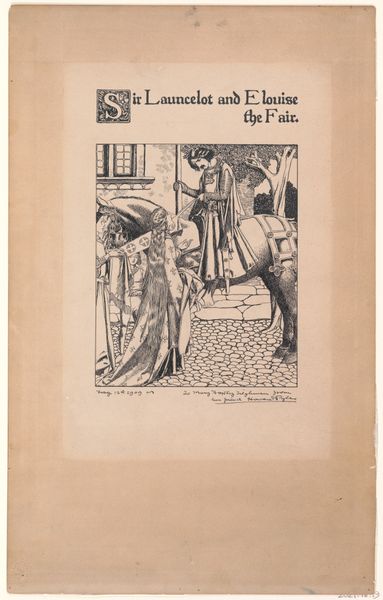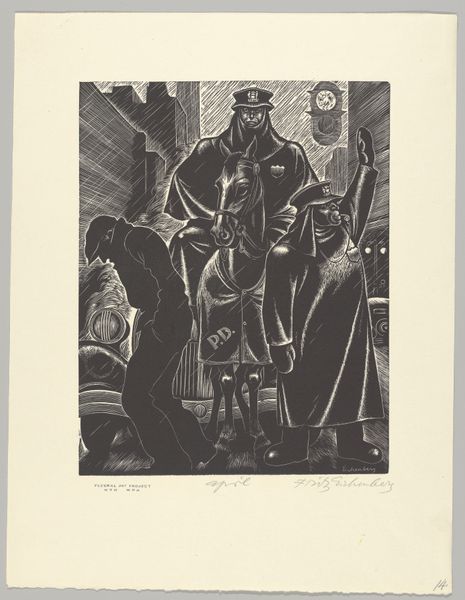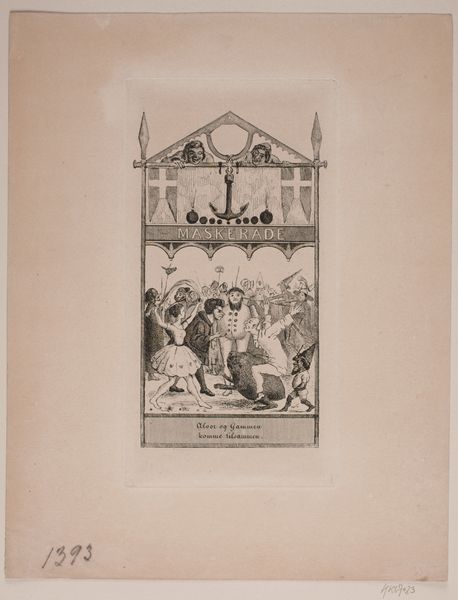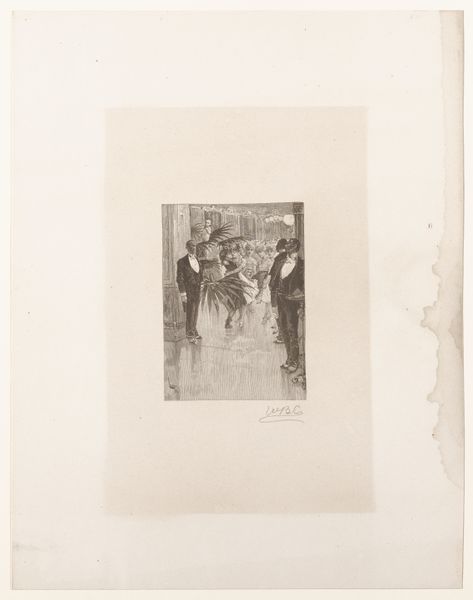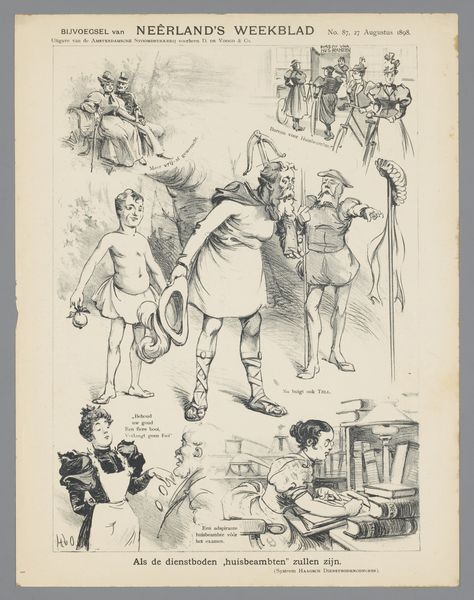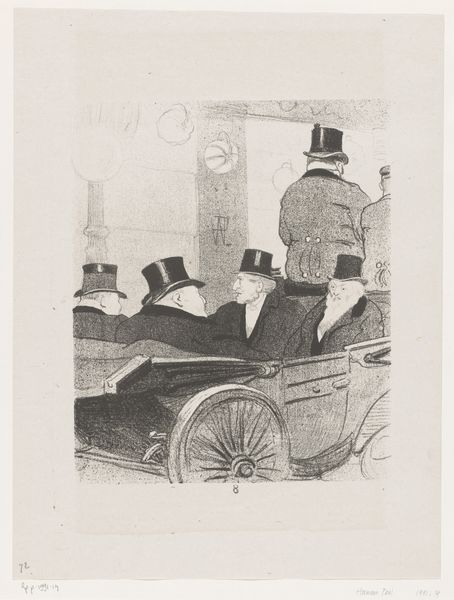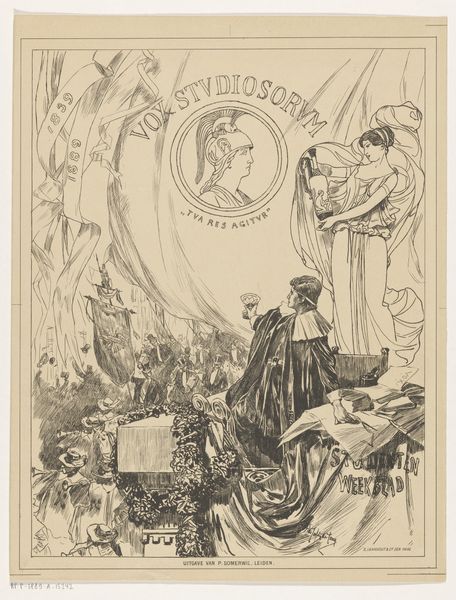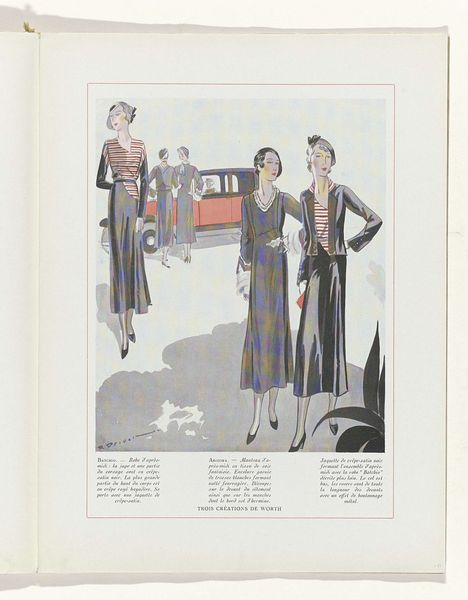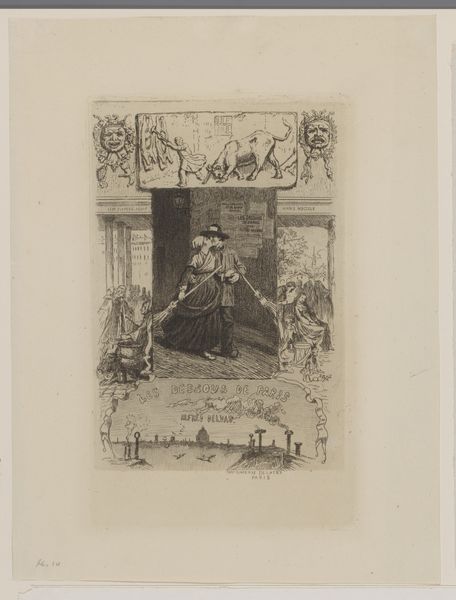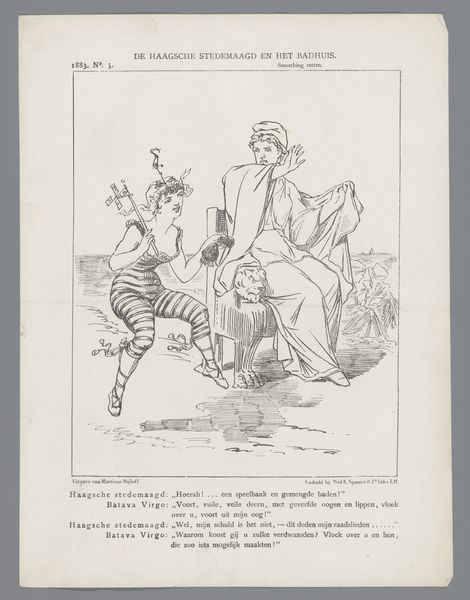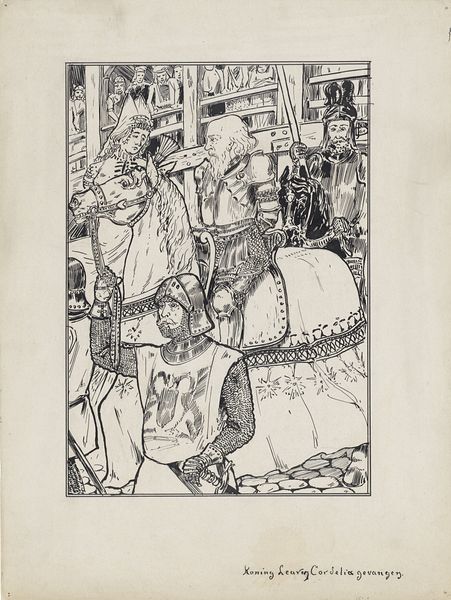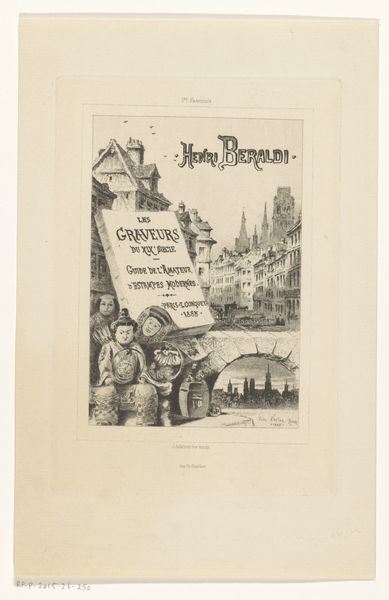
graphic-art, print, linocut
#
graphic-art
# print
#
linocut
#
lined art
#
figuration
#
flat colour
#
linocut print
#
symbolism
#
history-painting
#
cartoon style
Dimensions: height 432 mm, width 326 mm
Copyright: Rijks Museum: Open Domain
Curator: The pallid linocut immediately gives me an ominous feeling. Editor: Indeed. We’re looking at Albert Hahn's "Ecce Homo" from 1905, a powerful work of graphic art using printmaking techniques. Curator: The central image is striking—Christ on the cross fading into the backdrop of a wealthy figure riding in what appears to be an early automobile. What is that positioning meant to evoke? Editor: Hahn was a socialist and a satirical artist. This piece, employing a stark contrast between religious suffering and modern opulence, functions as social commentary. He challenges the viewer to confront the complacency of the wealthy elite in the face of systemic injustice. Curator: The layers of symbolism here are dense. The flat, almost cartoonish style accentuates the contrast and heightens the emotional weight of the image. How might that visual contrast communicate broader meaning, especially within the cultural memory of early 20th century Europe? Editor: That cartoon style, somewhat crude and simplistic, makes the work approachable. Hahn uses recognizable symbols—Christ, the car, and the political figure—to make a strong statement on power and inequality. It's a visual critique of social structures, meant to spark debate. The "flat colour" he uses actually helps bring the important imagery to the fore. Curator: A debate that still resonates today, actually. Is there something particularly forceful about this appropriation of a religious subject by what we could understand as "secular" ideology? Editor: Absolutely. Hahn uses a historical painting style to depict what he felt was a contemporary betrayal of Christ’s teachings, and in the wake of industrial and imperial expansion, this image can remind us of those enduring inequalities. Curator: Understanding its position within the arc of history clarifies the artist's viewpoint, yes. By interweaving familiar imagery with contemporary political realities, Hahn forges new, enduring meaning. Editor: Yes, and situating this art within an intersectional historical lens of art history, gender, and race is vital in interpreting the continuity of how political injustice manifests over time through social visual codes. It's heavy, it’s political—it makes you think about accountability.
Comments
No comments
Be the first to comment and join the conversation on the ultimate creative platform.
